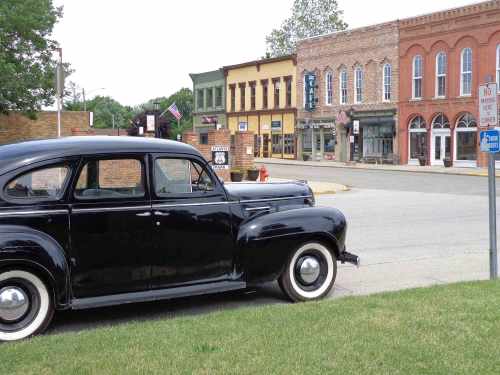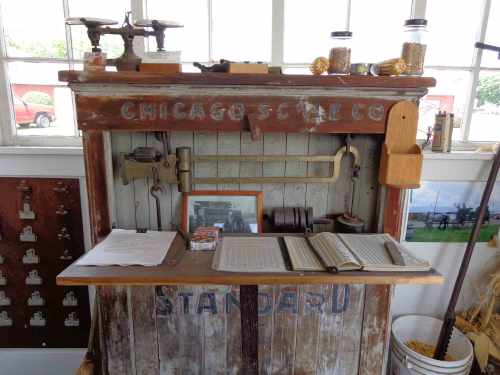
Atlanta, IL, on Route 66
While agriculture was the focus of my research, that didn’t keep me from enjoying all aspects of life, culture, and history that I encountered as I explored. While I roamed about central Illinois, I was delighted to encounter—and even drive on a number of times—pieces of the historic Route 66.
Most Americans have heard of Route 66, the highway that stretched from Chicago to Los Angeles, if only from the song that suggests, “Get your kicks on Route 66.” I’d only previously visited the beginning of the road in downtown Chicago and walked along a short stretch in Albuquerque, New Mexico.
While Route 66 was not the first important road in the country, it was one of the first created for motor vehicles. Approved in 1926, it wasn’t entirely constructed and paved until 1938. Route 66 quickly became a key element of America’s love affair with car travel. The highway connected towns, and new towns grew up along the highway as its importance increased.
Drive-in restaurants, fast food, motor inns, and roadside advertising either had their genesis or came of age along Route 66. It became known as the “Mother Road,” a term John Steinbeck used for it in the Grapes of Wrath, as it became an important escape route for those migrating to California from the Dust Bowl states.
Automobile traffic surged following World War II, as prosperity returned to a country recovering from two wars and the Great Depression. The song mentioned above, written by Bobby Troup and recorded in 1946 by Nat King Cole, became a hit. In 1960, a TV show titled “Route 66” focused on a couple of heroes driving the highway in a Corvette, in search of each week’s adventure. The “Mother Road” was where people wanted to be.
But things change. Small towns slowed down traffic, so highways were routed around those towns—causing considerable hardship for those towns. More traffic, heavier trucks, faster cars called for wider roads and new construction methods that could withstand the onslaught. Today, Route 66 is no longer formally recognized as a U.S. Highway. It is a historic relic cared for by those who value history and the iconic nature of the road. There are segments and stretches that parallel new highways, but they hardly reveal the importance they once had. Still, one is pleased to encounter those segments and stretches—and remember what the highway once meant.
The photo above is of “downtown” Atlanta, Illinois, where Route 66 was once the main street through town. (Note the Route 66 sign on the wall visible over the car’s hood. If you click on the photo, it will enlarge, and the sign will be much clearer.)














